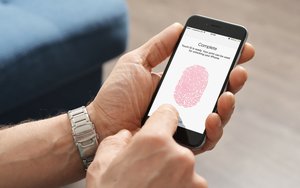Commentary
Internet Of Things Arrives One Behavioral Change At A Time
- by Chuck Martin , Staff Writer, October 10, 2016
 Much of the consumer benefit relating to the Internet of Things involves making things easier for a person to do.
Much of the consumer benefit relating to the Internet of Things involves making things easier for a person to do.
These ease-of-use steps may not come all at once and they may not seem like a big deal when first introduced.
One of the most notable steps will for some things to essentially automatically happen.
For example, MasterCard recently introduced a facial recognition payment system to more easily identify an online shopper. Not an overly big deal, but the approach means a customer doesn’t have to type in a password.
And Expedia is using facial technology to determine what elements of a trip appeal to consumers. The potential traveler watches a video while Expedia taps into the person’s camera (with permission) and, through facial recognition software, captures when the viewer smiles and then creates on-the-fly a special video for the traveler customized for what that consumer likes. A personalized guide also is presented based on the consumer's preferences.
Rather than the consumer having to input desires or answer questions, facial recognition used while watching a video does all of that.
Fingerprint scans are similar in short-cutting consumer actions.
The iPhone 6 had pretty good fingerprint recognition, which was improved in the iPhone 6S. Now in the iPhone 7, the fingerprint recognition is lighting fast and more entities are allowing a fingerprint scan rather than typed password to quickly identify people. Apple is not alone in this, For example, the fingerprint reader on my Android Nexus 6P, which is on the back of the phone, is virtually instant.
Amazon Dash lets consumers buy with the touch of a button. The same can happen via voice, courtesy of devices such as Amazon’s Alexa or the new Kenmore Alfie, a voice-controlled intelligent shopper.
Smartphones as hubs also have other uses in IoT world. There are the automatic switching devices, like the well-known Belkin WeMo, which anything can be plugged into, turning it into a smartphone-controlled on-off item, like a room lamp.
None of these are revolutionary in themselves but they all impact consumer behavior.
The step of typing something like a password is being replaced by a finger press or face view for a quick scan. And rather than physically going to a device to execute something or toggle a witch, that action becomes a remote activity.
The Internet of Things won’t be arriving with a big splash on one day with one major device in the future. It is arriving day-by-day and device-by-device.
It is here and it is growing. It’s just that not everybody yet notices what it is.



